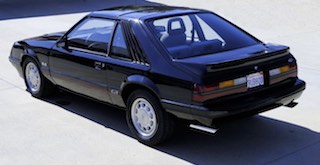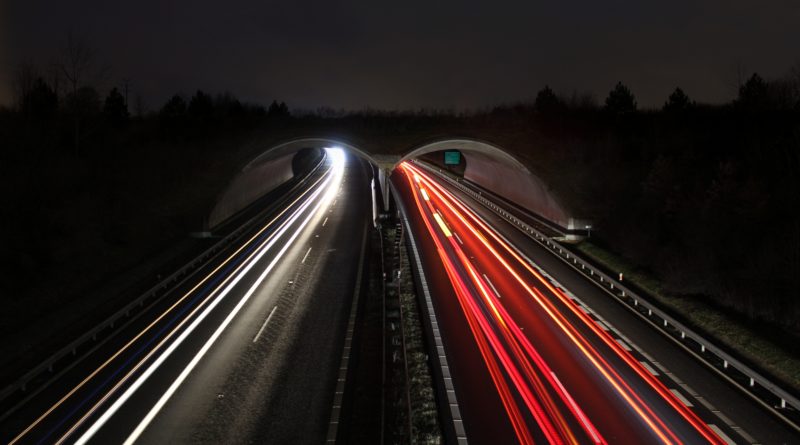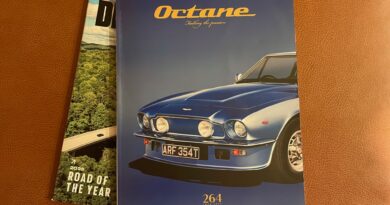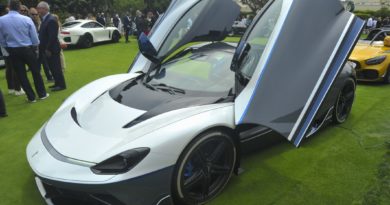Into the Twilight Zone
The non-stop, all-night road trip – when I was younger I developed a penchant for these. Now with COVID, driving seems a more reliable form of getting somewhere again because, after all, you’re the one in control. And so, my crazy penchant has returned. Eighteen or more hours of driving, stopping only for gas, food and basic needs, and cruising at 20 over the speed limit because it means cutting hours off your trip. These over-nighters remind me of that most famous of non-stop domestic drives, the Cannonball Run.
Not just the basis for several movies, it remains a real life, non-stop car race across the wide expanse of America from Manhattan to Redondo Beach, CA. Conceived by Car and Driver writer Brock Yates and his editor, Steve Smith, their inaugural 1971 run was intended as subject matter for the magazine. Their theme was to both highlight the interstate highway system and protest restrictive traffic laws. The five Cannonballs sanctioned by Yates became notorious; the second was won by true racing legend Dan Gurney. In case you’re wondering who Gurney is, he’s one of only two drivers to win races in the four major top racing classes – NASCAR, World Sports Car, Indy Car and Formula One. In the passing years the Cannonball quickly elevated into American folklore. Current Cannonballs are high-tech, outlaw events with a claimed record of 25 hours, 39 minutes over 2,825 miles. Including stops and traffic and all else, that is an average speed of 110 mph.

With a 750cfm 4-barrel Holley on a 302 V8, this car was a screamer for its time. Top speed was about 145 mph.
My longest non-stopper is a 1,950 mile, 21-hour blast from Seattle to Wichita, KS back in 1987 (I did a 30-hour one from Wichita to Seattle a few years later, but that was in a humble ’74 VW Dasher Wagon). I had been without my ’85 Mustang GT for 4 months and couldn’t take it anymore. So after work one Saturday, I had flown back to Seattle to fetch my car. The goal was to make it back to my contract job at Boeing-Wichita on Monday morning. We were paid by the hour, and I was always looking to maximize my paycheck. So the race was on. Subtracting 8 gas stops, two for food (and one for a ticket) meant I covered the distance averaging 105 mph. The ticket stop is memorialized in my post “Troopers and Tickets – My Top 10”. There have also been numerous runs from Seattle to various parts of California.
If you’ve never tried it, driving non-stop overnight is a strange undertaking. The excitement of driving late through the darkness is an otherworldly experience – with no traffic and no concept of scenery, your only sense of time and space becomes the road. It makes for a surreal twilight zone experience with a bizarre space/time continuum-like twist. For starters, you don’t notice the changes that overcome you. Elevated levels of concentration over long distances at high speeds change your sensitivity. At stops, you begin to notice your skin is crawling with a tingling kind of itchiness. Later on it starts to permeate into your muscles. That’s followed later still at gas stops by an almost vertigo-like sense of floating; your legs don’t work especially well and even though a good stretch helps relieve some of the stiffness, the vertigo lingers. You realize spending too long outside the car will end your space-induced high, so you long to hurry through the break and get back behind the wheel where you have adapted so well to that twist in ‘the zone.’
Once you escape the large metro areas, after 11 pm things really thin out and it’s just you and the truckers experiencing this trek through time. It becomes a dark path defined only by yellow reflectors and fog lines. The first few hours are fairly routine – after all, you’ve driven this late at night before. What’s the big deal? After midnight though, the character of darkness and time somehow change. It’s a strange phenomenon. It seems darker, thicker, lonelier. The long distances between cities become a no-man’s land where if something happens it probably won’t end well for you. Periods of wondering if you’re going to doze off and kill yourself and what that will look like. Periods of simply gliding through nothingness into the black void. You realize the lack of a horizon is starting to narrow your field of focus, making life more Tron-like. Is there an escape? I begin wondering if I will meet a transcendental, Jeff Bridges-like character out there somewhere on my next stop….
At first glance, rest areas seem to be a God-send for catching a nap. But they’re also generally out in the middle of nowhere, and I feel vulnerable. You hear stories of robberies and bad endings. Suddenly my Tron characters don’t seem so likable, and Mr. Bridges isn’t here. So I dispense with any thought of a rest area unless it’s for a quick pee or a free cup of coffee. On into the night we roll.
Any long-hauler knows the toughest driving hours are those two or three before dawn and the easiest ones are the two or three right after. There’s the adventure of limited lines of sight, depending on your night vision and your headlights and straining to see beyond them. But you’re only sharing the road with those hard-core truckers now (and there are lots of them). It makes driving quickly almost a peaceful, meditative experience where it’s just you, the car and the lines. The concentration required to drive fast at night is higher – you have to believe the line, commit the wheel into the turn and go with it, trust it. There’s no one else out here. Enjoy the isolation and the limited sense of sight; you’re feeling the car now more than ever, hearing it’s mechanicals, listening to the exhaust note, feeling the pliancy of the suspension; getting that tactile sense of traction through the seat of your pants, the small of your back and the steering wheel. There’s the connection to driving that you’re looking for! You realize this kind of heightened awareness can only happen at night precisely because you cannot see.
Your brothers of the night road, the truckers, make the isolation less palpable. The number of them on the roads these days is mind-boggling. Since truckers are now limited to 12 hours a day, on overnights the restaurant truck stops, rest stops and freeway sidings are jampacked with semis lined up front to end. Sometimes there are hundreds of them. In the western states I have done counts in the dead of night that average 4 semis for every car (Yeah, I can be that anal. But the mind wanders and you have to occupy yourself somehow.). And every single rest stop and nearby siding is jammed full of rigs. The vastness and density of this nation’s trucking network is amazing. Their presence makes you at once admiring of and grateful for their dedication. For some, it’s a job. For most, it’s a lifestyle you get some glimpse of by sharing the night road with them.
So if you’re into adventures and love to drive, this is one you’ve got to try. It’s a little crazy, but that’s why we do it. The non-stop all-nighter is sort of a bucket list kind of drive every slightly off-kilter car enthusiast should have a go at. But be warned, that’s also coming from a car enthusiast who may actually be more than slightly off his rocker. Varoom!





Your “Into the twilight zone” effected me in two ways… the first had me recall my own nighttime road trip… mine was from LasVegas to Reno, departing LV at midnight… as it was during the Summer I had no concerns regarding ice or snow.
Highway 95 from LV to Reno goes through a few small towns, Tonapah probably the largest. From LV to Tonapah there were a few cars and several semi’s. After leaving Tonapah it was like the road gods cleared all the traffic… I was all alone. That realization was both liberating and terrifying.
It was a full moon illuminating the flat/straight road… I lowered the windows… decided I did not need headlights, and shut them off. I also dimmed the dash lights to barely visible…
The effect was hypnotic… 100mph… cruise control set…just me and whatever lay ahead on my deserted road.
I’m not sure how much time passed while in this hyper sensitive state… my reverie was broken when a thought popped into my head… I sure hope, if this ends in a fireball, that I will be at least in the top five Darwin Awards… heck… maybe #1!
As that thought took root… I tapped the brakes disengaging the cruise control and felt like I was floating back to Earth.
I saw an oncoming set of headlights… what nerve that bastard has being on my road!
As I flashed by I did notice sheer panic as he realized we passed within inches. I still wonder if he had an unexpected/unplanned bowel movement with the knowledge that some maniac was driving at Mach 1 with no lights.
As I continued to head north.. and civilization.. I thought … man I gotta do this again!
I started this by saying I had TWO thoughts…the second one confirming you are nuts.
(In a totally appreciated way)